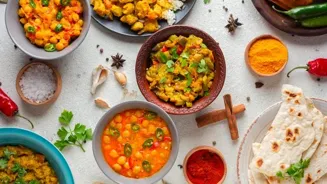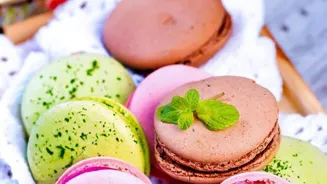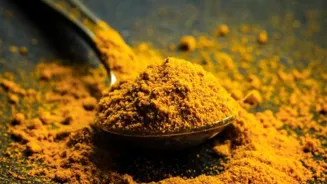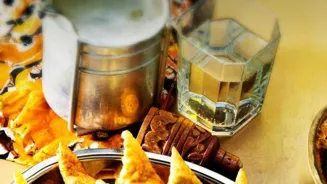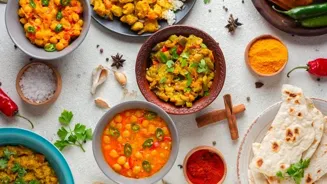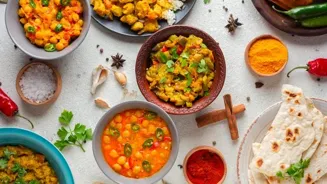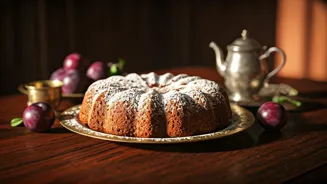Dive into the world of Indian sweets with our 8 essential baking tips! Elevate your mithai game right at home. Read on!
Namaste, foodies! Are you ready to take your Indian mithai game to the next level?
Forget buying from the shop – imagine creating melt-in-your-mouth gulab jamuns, perfectly flaky kharis, and delightfully crisp jalebis right in your own kitchen.
Baking Indian sweets might seem intimidating, but with a few simple tips and tricks, you can become a mithai maestro in no time. We’ve compiled eight essential baking basics to help you achieve sweet success. So, grab your apron, preheat your oven, and let’s get baking!
It’s time to impress your family and friends with homemade treats that are bursting with flavour and tradition.
The Foundation: Choosing the Right Ingredients
Just like building a strong house, making perfect Indian sweets starts with using the right ingredients. The quality of your ingredients directly impacts the taste and texture of your final product. For example, when baking with ghee, use pure desi ghee for that authentic aroma and rich flavour.
Opt for high-quality maida (all-purpose flour) or atta (whole wheat flour) depending on the recipe, ensuring it is fresh and finely ground.
Spices are the heart and soul of Indian sweets, so don't compromise on their quality.
Use freshly ground cardamom, nutmeg, and saffron for the most intense flavour. For sweeteners, choose fine granulated sugar for even melting and caramelization. If you're using jaggery, make sure it's free of impurities and has a consistent texture.
Investing in good ingredients is the first step towards achieving mithai perfection. Think of it as giving your sweets the best possible start in life. Freshness is key, and the better the quality, the more delicious your results will be.
Measuring Matters: Precision is Key
In baking, unlike cooking, precision is paramount. A slight miscalculation can throw off the entire recipe, resulting in a sweet that's either too dry, too sweet, or just not quite right.
Invest in a good set of measuring cups and spoons, and use a kitchen scale for dry ingredients like flour and sugar. Following recipes precisely is especially important when working with leavening agents like baking powder or baking soda.
Too much or too little can drastically affect the rise and texture of your mithai.
It's also crucial to use the right measuring technique. When measuring flour, spoon it lightly into the measuring cup and level it off with a knife.
Avoid scooping directly from the bag, as this can compress the flour and result in using too much. Similarly, when measuring liquids, use a liquid measuring cup and check the level at eye level.
Accurate measurements ensure consistency and predictability in your baking, allowing you to recreate your favourite Indian sweets time and time again with perfect results. Accurate measurement, a great treat is earned
Temperature Tango: Understanding Heat
Oven temperatures can vary significantly, so it's essential to understand your oven's quirks. Invest in an oven thermometer to ensure your oven is heating to the correct temperature. Preheating is also crucial, as it allows your sweets to bake evenly.
If your oven tends to run hot or cold, adjust the temperature accordingly. For example, if your mithai is browning too quickly, lower the temperature by 10-15 degrees.
Different Indian sweets require different baking temperatures.
Delicate sweets like cookies often need a lower temperature to prevent burning, while thicker sweets like cakes may require a higher temperature to ensure they are cooked through.
Understanding the science behind heat and how it affects your ingredients will help you achieve the perfect texture and colour. Always keep a close eye on your sweets while they're baking and adjust the temperature as needed.
The heat makes or breaks the recipe, so it is important to know the temperature.
Mixing Magic: Mastering the Art
The way you mix your ingredients can significantly impact the texture of your Indian sweets. Overmixing can develop the gluten in flour, resulting in a tough and chewy sweet. Undermixing can leave lumps and result in an uneven texture.
Use a light hand when mixing and stop as soon as the ingredients are combined. For some sweets, like barfi, a specific mixing technique is required to achieve the perfect melt-in-your-mouth consistency.
Understanding the purpose of each mixing step is also important.
For example, creaming butter and sugar together incorporates air, which helps to create a light and fluffy sweet. Whisking egg whites creates a stiff and stable foam that adds volume and lightness. Use the right tools for the job, whether it's a stand mixer, a hand mixer, or a simple whisk.
Practice makes perfect, so don't be afraid to experiment and find the mixing techniques that work best for you. It's a skill that takes time to master, but with practice, you can mix like a pro.
The Role of Fat: Ghee, Butter, and Oil
Fat plays a crucial role in the flavour, texture, and overall success of your Indian sweets. Ghee, butter, and oil each impart unique characteristics to your baked goods. Ghee, with its rich and nutty flavour, is a staple in many traditional Indian sweets.
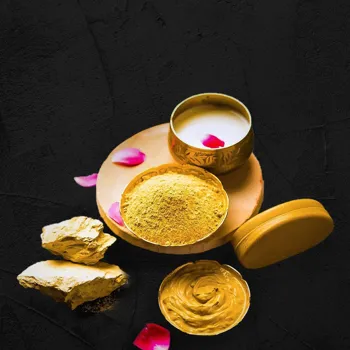
Butter adds a tender and moist texture to baked goods, while oil contributes to a lighter and more delicate crumb. Choosing the right type of fat for your recipe is essential.
When using ghee or butter, ensure it's at the right temperature.
Softened butter or melted ghee incorporates more easily into the batter and creates a smoother texture. When using oil, choose a neutral-flavoured oil like vegetable oil or canola oil to avoid overpowering the other flavours.
Understanding the properties of different fats and how they interact with other ingredients will help you create Indian sweets that are rich, flavorful, and perfectly textured. Fat helps to bind the ingredients in the right way, which is important for baking the perfect recipe.
Flavour Fiesta: Spices and Aromatics
Spices are the soul of Indian sweets, adding depth, complexity, and warmth to every bite. Don't be afraid to experiment with different spice combinations to create unique and flavourful mithai.
Cardamom, saffron, nutmeg, cinnamon, and cloves are all commonly used in Indian sweets, each lending its own distinct character. Freshly ground spices are always preferred for the most intense flavour.
Aromatics like rose water, kewra essence, and almond extract can also enhance the aroma and flavour of your sweets. Use them sparingly, as a little goes a long way. Dry roasting spices before adding them to your recipe can intensify their flavour and aroma.
Toast them lightly in a dry pan until fragrant, being careful not to burn them. By mastering the art of using spices and aromatics, you can create Indian sweets that are truly unforgettable. Spices add the flavour, and are the backbone of the recipe.
Shaping Sensations: Presentation Matters
The way you shape and present your Indian sweets can elevate them from ordinary to extraordinary. Whether it's perfectly round gulab jamuns, intricately shaped pedas, or elegantly layered barfi, presentation matters. Use cookie cutters or moulds to create uniform shapes.
Roll dough evenly to ensure consistent baking. For sweets like jalebi, practice your piping skills to create beautiful swirls.
Garnish your sweets with nuts, dried fruits, edible flowers, or silver leaf (vark) for an added touch of elegance.
Arrange your sweets artfully on a platter or in a box to make them even more appealing. Remember, we eat with our eyes first, so take the time to make your Indian sweets look as good as they taste. A perfect shape and great look, makes the guest want more and more!
Storage Secrets: Keeping it Fresh
Proper storage is key to preserving the freshness and flavour of your Indian sweets. Store your mithai in airtight containers to prevent them from drying out or absorbing unwanted odours.
Some sweets, like gulab jamuns, can be stored at room temperature for a few days, while others, like barfi, should be refrigerated to prevent spoilage.
Freezing is also an option for longer-term storage. Wrap your sweets tightly in plastic wrap and then place them in a freezer-safe container.
When ready to eat, thaw them in the refrigerator overnight. Avoid storing different types of sweets together, as their flavours can mingle. By following these storage tips, you can ensure that your homemade Indian sweets stay fresh and delicious for longer.
Storage is a very important tip to keep the treat at its best for longer period of time for consumers to enjoy!
So, there you have it! Eight essential baking basics to help you perfect your Indian sweets.
With a little practice and patience, you'll be creating mouthwatering mithai that will impress everyone. Happy baking! Remember, baking takes time along with focus and attention. Do not worry if the results are not satisfactory in the first try. With practice, you get better over time.
